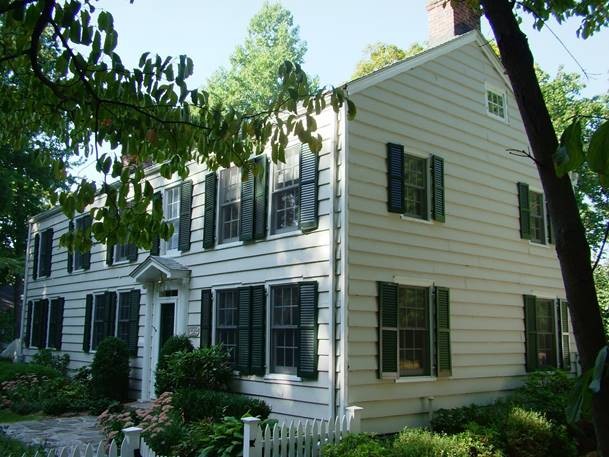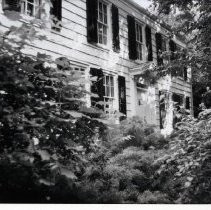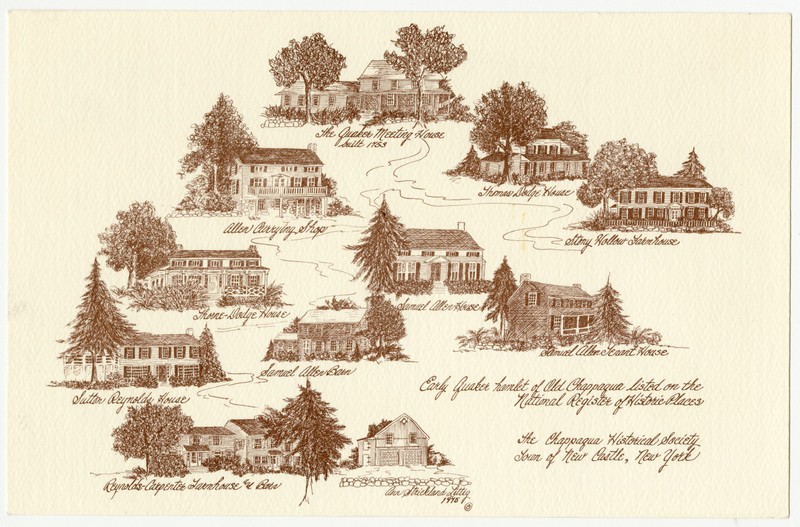Stony Hollow Farm (Old Chappaqua Historic District)
Introduction
Text-to-speech Audio
Stony Hollow Farm is a private residence located in the Old Chappaqua Historic District in the town of New Castle in Westchester County, New York. The earliest historical references to the property can be found in New Castle town records from 1823 that mention the property, then written as “Stony Holler,” as belonging to Jesse Brady. It is estimated that the oldest portions of the Stony Hollow Farm house also date to 1823, although the first surviving deed for the property is from 1835. Over the many decades since its original construction, the home has been enlarged and currently includes a number of additions, the most recent dating to the 1900s. The Stony Hollow Farm house continues to exhibit a solid 19th-Century Federal architectural style. It stands as a reminder of Chappaqua’s early days as a primarily Quaker settlement. The Old Chappaqua Historic District, including the Stony Hollow Farm, was placed on the National Register of Historic Places in 1974.
Images
Stony Hollow Farm, 476 Quaker Road, Chappaqua

Stony Hollow farmhouse, 478 Quaker Road - 1976

Drawings of Early Buildings in Chappaqua by Ann Strickland Littig, 1975

Backstory and Context
Text-to-speech Audio
Stony Hollow Farm is the northernmost site of the Old Chappaqua Historic District, located about half a mile north of the Friends’ Meeting House. It takes its name from the rugged valley behind the house, which was once part of a farm of about 30 acres. The farm in turn was originally part of a much larger property along northern Quaker Road that belonged to the Brady family. A reference to “Stony Holler” as belonging to Jesse Brady appears in New Castle town records in 1823, and it is likely that at least the earliest section of the house existed at that time. In any event, a deed of 1835 records the sale of the farm by Jesse Brady’s heirs, and it is virtually certain that the property included the house by then.
Like most of the buildings in the historic district, the house was erected in stages. The earliest may have been a small cottage of only one-and-a-half stories, with one or two rooms surmounted by a sleeping loft. Later additions greatly enlarged the structure and raised it to a full two stories. The last was a wing perpendicular to the rest at the southern end, erected in the 1900s. The architectural style, like that of most other houses in the district, is early 19th-century Federal, and the various sections have been combined so harmoniously that they almost seem to have been built as a single structure.
The most notable former owners of the farm include the Quaker family of Elijah and Eliza Collins, who lived there for the last half of the 19th century, and Jane Bedell, whose brother Edwin was the editor of the local newspaper, The Item, in the early 1900s.
Sources
- Chappaqua Historical Society, Town of New Castle. Prepared by Dorothy Whitney Gruber in collaboration with Isabelle A. Haight. The Early Quaker Hamlet of Old Chappaqua: Its Houses, Its People, Its Way of Life. Chappaqua, NY. The Chappaqua Historical Society. 1973.
- Chappaqua History Committee and Gray Williams. New Castle: Chappaqua and Millwood. “Images of America” series. Charleston, SC: Acadia Publishing, 2006.
- “Old Chappaqua Historic District #74001319.” National Register of Historic Places. United States Department of the Interior/National Park Service. 1974. https://catalog.archives.gov/id/75323143
- Williams, Gray. Picturing Our Past: National Register Sites in Westchester County. Westchester County Historical Society. 2003.
Gray Williams
Westchester County Historical Society
Westchester County Historical Society
